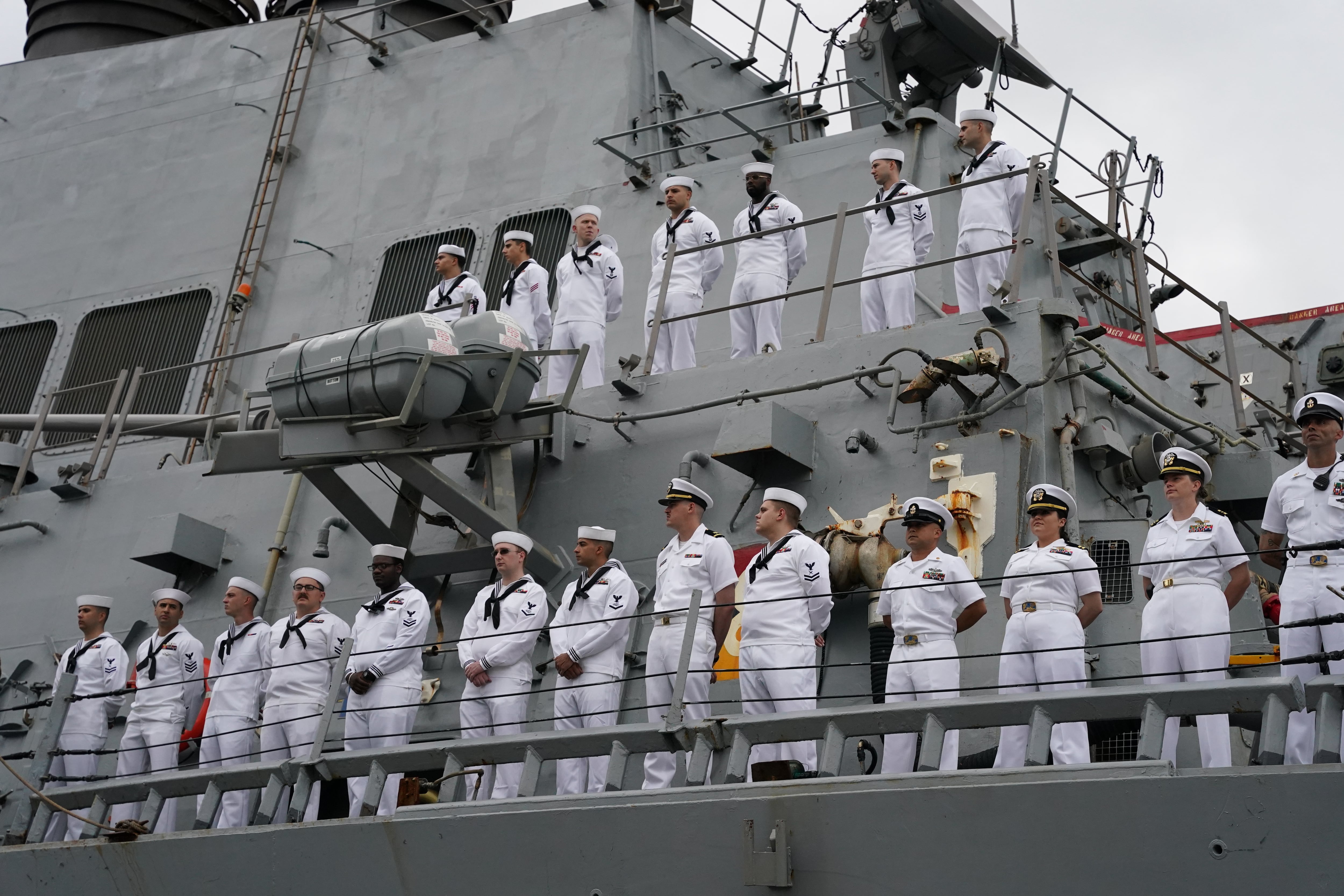The Navy surpassed its retention goals in fiscal 2021 and is shifting its focus from expanding the Fleet to sustaining the current force, according to the service.
“We met FY-21 benchmarks in a challenging environment due to strong Fleet leadership at all levels focusing on retaining the right Sailors within both the Active and Reserve Component,” a new naval administrative message states.
The service said the retention rate for Zone A, those with up to six years of service, was 67 percent — up from the Navy’s target retention goal of 57 percent.
For Zone B, those who have between six and 10 years of service, the retention rate was 68 percent, just over the 67 percent benchmark. And for Zone C, those with between 10 and 14 years of service, the retention rate was 85 percent, 3 percentage points above the Navy’s 82 percent benchmark for Zone C.
Those retention rates factor in those serving in the Navy Reserve.
RELATED

“We remain dedicated to attracting, developing and retaining the very best talent,” the NAVADMIN said. “As we move into FY-22, we are shifting from a trajectory of growth to sustainment while still aggressively working to fill our existing sea duty gaps. This entails focusing on balanced communities to ensure we have the right mix of ratings, pay grades and Navy enlisted classifications (NECs) to meet the mission.”
As a result, the Navy is establishing a “more competitive” Retention Excellence Award, and is introducing a Best in Class award for 18 different types of sea duty platforms — mostly ships — for the top performing commands within U.S. Fleet Forces Command and U.S. Pacific Fleet. Each platform has its own specific retention benchmarks, which must be met for at least two quarters or for the fiscal year overall, the NAVADMIN said.
The Navy aims to expand the BIC award to include operational and shore duty units in the future.
For other Echelon II and III commands not competing in the Best in Class award, the Navy is establishing the following retention targets for FY22 under the Retention Excellence Award: 62 percent for Zone A; 68 percent for Zone B; and 85 percent for Zone C.
“A more competitive REA will encourage leadership engagement at every level to sustain retention, based on the historical averages for similar commands,” Vice Adm. John Nowell Jr., the chief of naval personnel said in a Navy news release. “Adding a ‘Best in Class’ winner for each fleet will set a clear expectation that no matter what benchmarks we achieve, there is no limit to retention excellence and that every Sailor counts!”
To assist filling sea duty gaps, the Navy is introducing a new enlisted career management policy this year that will allow some enlisted sailors to earn up to $800 extra each month by volunteering to extend their sea duty tour.
The Navy also met its goals to recruit new sailors last year.
The service exceeded its active duty enlisted accession goal of 33,400 in FY21, bringing in a total of 33,559 new sailors to the Fleet, according to Cmdr. Dave Benham, spokesman for Navy Recruiting Command.





